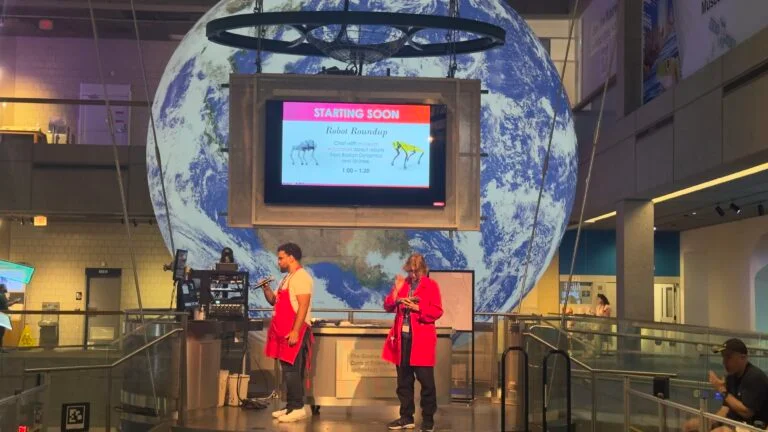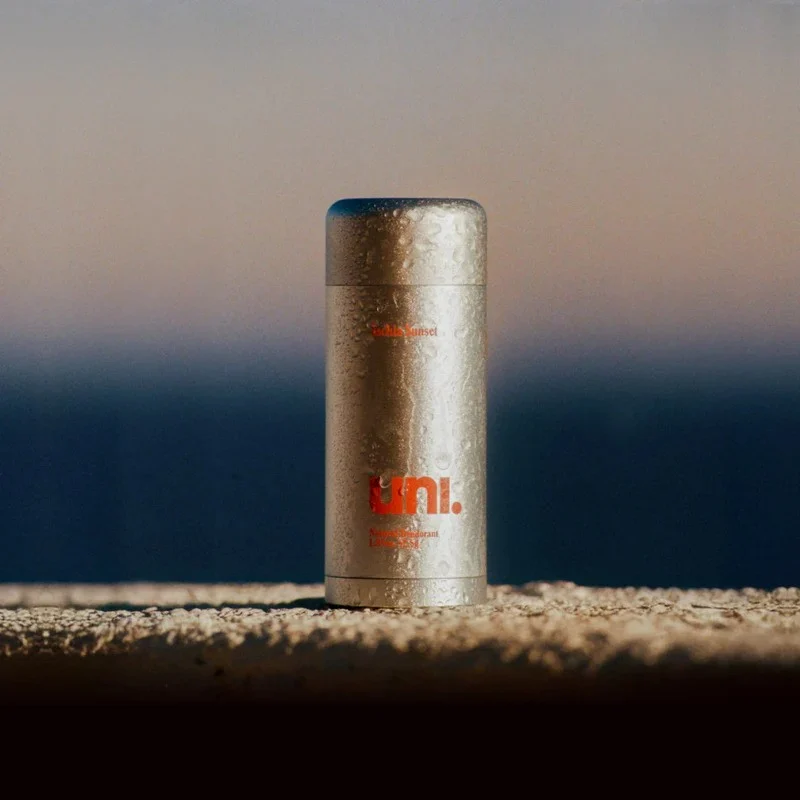
“I think it’s really, really useful for people to have a chance to see them, learn more about them, ask questions about them.”
At the Museum of Science, visitors can see robot dogs and humanoid robots in action.
The museum’s Exploring AI exhibit is constantly evolving to keep up with the latest technologies. “Our goal is to encourage visitors to think deeply about the technology that we’re encountering,” Museum of Science educator Kate Macakanja said.
Within the Exploring AI exhibit, Spot, a yellow, four-legged robot dog made by the company Boston Dynamics, is on display all day, every day and has been for the last three years.
Spot walks up and over an uneven staircase, across rocks, and over an obstacle before resting on its charger every 180 seconds.
A replica of Spot can be found right outside the obstacle course, allowing visitors to feel what the robot dog is all about.
While Spot appears to be operating alone on the course, the robot is programmed to do so by someone at the museum, using a Nintendo Switch-like controller with two joysticks and three camera angles.
“It’s all being controlled either by somebody standing there, holding a remote, and driving it around, or somebody preprogrammed something for the robot to do,” said Macakanja.
Both Spot and Go2, a robot dog by the Chinese Company Unitree that the museum acquired this spring, show off their capabilities and dance moves during the Robot Roundup show.
During the show, two scientists control the jumps, rolls, and tricks of the robot dogs, while answering the audience’s questions.
While many of the questions are about the robots’ fragility, some visitors ask about the purpose of the robots, which is to perform dangerous and difficult tasks that humans can’t or shouldn’t do.
“I think in all likelihood [robots] will become a bigger part of people’s lives. So I think it’s really, really useful for people to have a chance to see them, learn more about them, ask questions about them,” Macakanja said.
The Museum of Science is also home to Stompy, a humanoid robot by Unitree, that comes out to play games with visitors during Robot Storytime.
The silver robot is about the size of the average 8-year-old and walks on two legs. It can also squat, wave, stand up, and shake hands.
On Sept. 27, attendees got to see Spot, Go2, Stompy, and other robots complete tasks and walk in a parade during MassRobotic’s eighth annual RoboBoston Robot Block Party in the Seaport.
In the center of the Exploring AI exhibit, Boston Dynamics’ now-retired humanoid robot Atlas, which could dance, carry objects, and do backflips, remains on display.
While biped robots are an engineering success, Macakanja said it is not clear how humanoid robots will be useful yet.
Inside display cases in the Exploring AI exhibit, the museum also has Toyota’s Punyo robot, which is designed to lift and carry household objects, and the MIT Cheetah 2, which can run up to 13 miles per hour and jump over objects up to 18 inches tall.
While educating the public on the role of AI and robots is still very much a work in progress, Macakanja suggested legislation be created to ensure these new technologies adhere to the purpose of assisting humans.
As Macakanja puts it: “The question is, how do we want to make sure that people are using [AI] in ways that we decide are ethical and responsible and kind of productive and useful to people? But, I do really think that that really starts with the education piece.”



